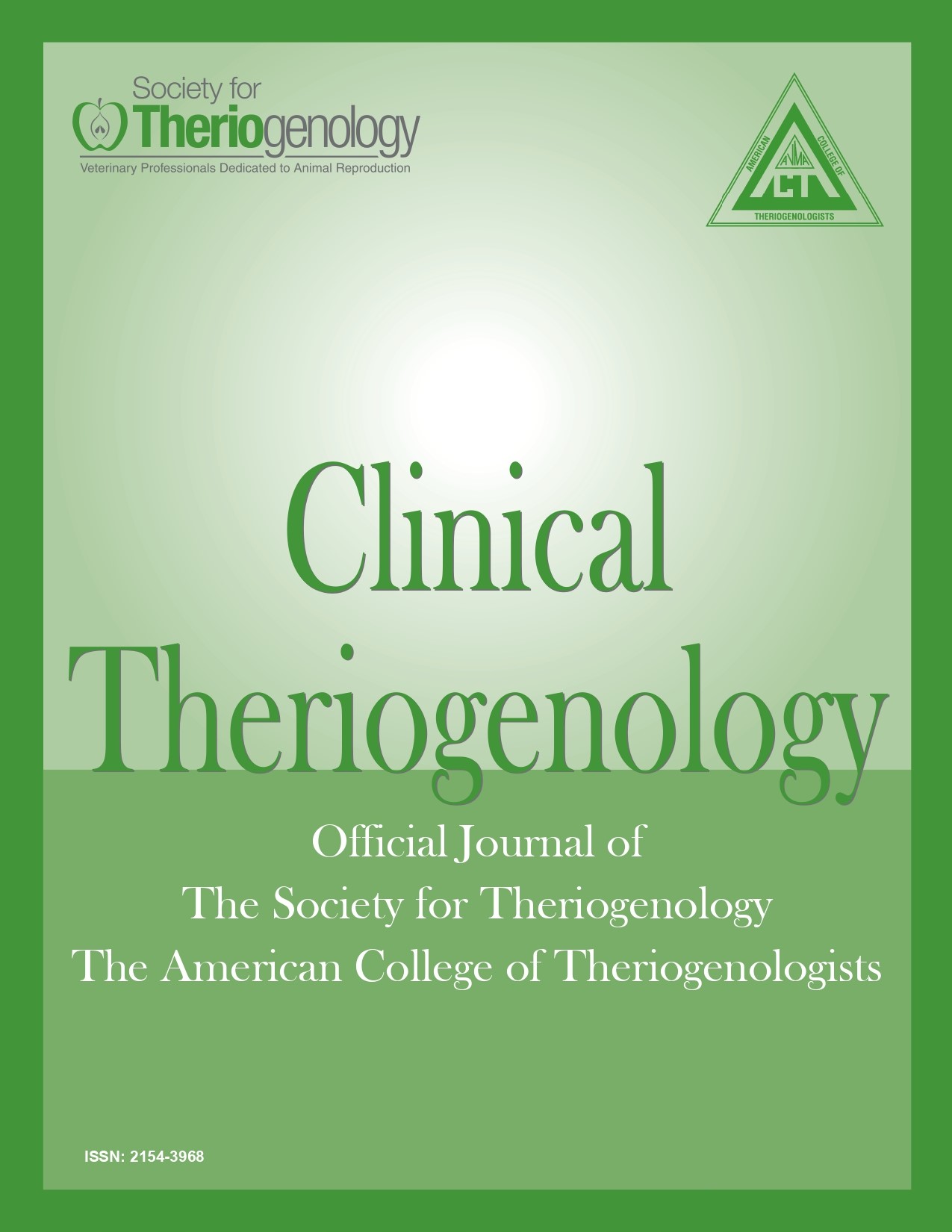Serum anti-Müllerian hormone concentrations in female alpacas: variations during the reproductive cycle and correlation with ovarian superstimulation response
Abstract
Earlier, we validated an anti-Müllerian hormone (AMH) enzyme-linked immunosorbent assay kit for male alpacas. First, we
compared the validation data with another kit. There was a high correlation (R2 = 0.94) between these 2 kits. Second, we used the
latter kit to determine serum AMH concentrations during follicular and luteal phases of the reproductive cycle in female alpacas.
There were no differences (p = 0.39) in serum AMH concentrations in alpacas (n = 11) between peak follicular and luteal phases
(mean ± SEM, 1.33 ± 0.35 versus 1.18 ± 0.34 ng/ml, respectively). Third, we treated female alpacas (n = 13; 5 - 11 years) after 14-
day treatment with decreasing doses of porcine follicle-stimulating hormone. There was no effect (p > 0.05) of day of treatment
on serum AMH concentrations. Number of follicles (7 - 10 mm; mean ± SD [as determined via transrectal ultrasonography]) at
end of treatment (12.69 ± 5.25; range: 6 - 24) was positively correlated (R2 = 0.7; p < 0.01) with serum AMH concentrations. To
conclude, the kit tested is usable for female alpacas; serum AMH concentrations were not affected by the cycle stage nor by ovarian
superstimulation treatment. Furthermore, a significant correlation between serum AMH serum concentrations and response to superstimulation
suggested that estimation of serum AMH concentrations may be valuable in determining ovarian follicular reserve.
Downloads

This work is licensed under a Creative Commons Attribution-NonCommercial 4.0 International License.
Authors retain copyright of their work, with first publication rights granted to Clinical Theriogenology. Read more about copyright and licensing here.







